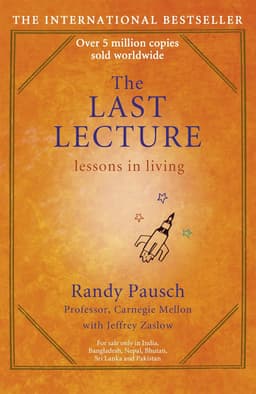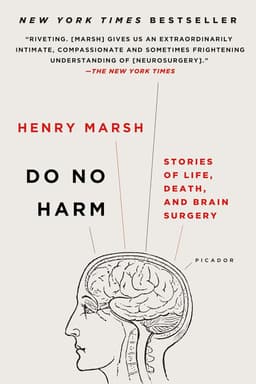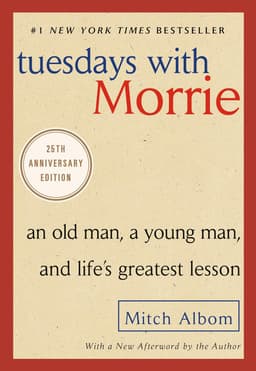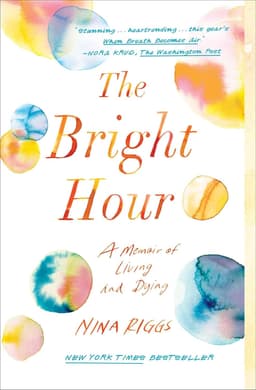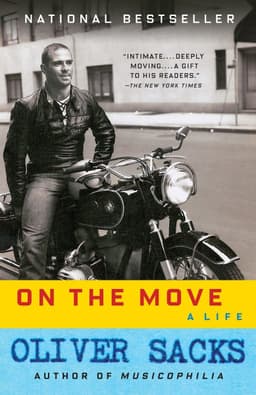If ‘When Breath Becomes Air’ moved you, you’re likely looking for books that delve into similar themes of mortality, meaning, and the human spirit. Incorporating the American perspective on life and mortality, these books resonate with universal themes while offering a deeply personal exploration of the human experience. In this article, we’ve selected ten books like ‘When Breath Becomes Air’ that echo Paul Kalanithi’s profound reflections on life and death. From memoirs of personal struggle to philosophical explorations, these books promise the same depth and impact.
Key Takeaways
Paul Kalanithi’s memoir, the New York Times bestseller ‘When Breath Becomes Air,’ deeply explores life, mortality, and the quest for meaning through his experiences as a neurosurgeon diagnosed with terminal lung cancer.
If captivated by ‘When Breath Becomes Air,’ readers may find similar emotional and existential themes in books by authors such as Viktor Frankl, Randy Pausch, and Atul Gawande, who blend personal memoirs with broader philosophical questions.
The Headway app offers a solution for those interested in profound memoirs but limited on time by providing condensed versions of popular books, helping readers quickly gain valuable insights.
What ‘When Breath Becomes Air’ is about
Paul Kalanithi’s memoir, ‘When Breath Becomes Air,’ deeply explores his dual passions for literature and neuroscience while also delving into the medical mystery of his terminal lung cancer diagnosis. From an early age, Kalanithi was captivated by the concept of the brain as an organic machine, leading him to transition from literature to biology during college. His journey through medical school and later as a practicing neurosurgeon provided him with a unique perspective on the human condition, blending scientific inquiry with a philosophical quest for meaning.
Kalanithi’s reflections on life and mortality are deeply intertwined with his experiences as a doctor. He believed that true meaning in life is rooted in human relationships, a realization influenced by both his literary and medical experiences. His encounters with patients, his own battle with terminal cancer, and the birth of his child profoundly shaped his understanding of life and death.
Readers captivated by Kalanithi’s eloquent reflections will find resonance in other books that delve into life’s existential questions. These books deepen our understanding of the human condition, exploring mortality, meaning, and the intricacies of the human spirit. Now, let’s explore ten outstanding books that encapsulate the essence of ‘When Breath Becomes Air.’
10 best books similar to ‘When Breath Becomes Air’
If ‘When Breath Becomes Air’ stirred you, these books offer a comparable blend of intimate memoir and existential exploration. Each book provides valuable insights into the human condition, reflecting on life, death, and what it means to live truly.
These books have been carefully selected for their poignant storytelling and emotional impact. They navigate the intimate realm of personal introspection and philosophical inquiry, akin to Paul Kalanithi’s memoir. Here are the top ten books that you must read if you loved ‘When Breath Becomes Air.’
1. ‘Man's Search for Meaning’ by Viktor Frankl
‘Man’s Search for Meaning’ is Viktor Frankl’s deeply moving memoir about his experiences in Nazi concentration camps and his development of Logotherapy. Frankl’s profound exploration of finding meaning in life, even in the direst circumstances, is both thought-provoking and inspirational.
Frankl’s concept of Logotherapy, which argues that the primary motivating force in life is the search for meaning, resonates deeply with readers. His insights into the human condition, the understanding of one’s own mortality, the freedom to choose one’s attitude in any situation, and the power of inner spirituality are powerful lessons for anyone facing adversity.
Similarities between the books:
Both memoirs delve into the profound search for meaning amidst suffering and adversity.
Each book offers a unique blend of personal experience and professional insight, providing deep reflections on life and mortality.
The authors' journeys, through their respective experiences with terminal illness and the Holocaust, resonate deeply with readers seeking understanding and inspiration during the hardships.
2. ‘The Last Lecture’ by Randy Pausch
‘The Last Lecture’ by Randy Pausch is a deeply moving memoir that captures the reflections of a terminally ill computer science professor on life, love, and achieving dreams. Pausch, who was diagnosed with pancreatic cancer, recounts his last lecture at Carnegie Mellon University, focusing on how to achieve one’s childhood dreams.
Instead of dwelling on his illness, Pausch used his final lecture to impart life lessons and reflect on living a good life. His humorous and uplifting approach to facing terminal cancer provides powerful lessons in resilience and positivity.
Similarities between the books:
Both memoirs strike a chord by exploring mortality and the resilience of the human spirit.
Pausch and Kalanithi share a commitment to making the most of their time, offering deeply personal insights into their journeys.
Each book blends personal experience with broader philosophical questions, providing profound reflections on life and death.
3. ‘Being Mortal: Medicine and What Matters in the End’ by Atul Gawande
Atul Gawande’s ‘Being Mortal’ is a thought-provoking examination of aging, end-of-life care, and the importance of quality of life. Gawande, a brain surgeon, delves into the deeply human experience of dealing with mortality, emphasizing that there is no one-size-fits-all approach to the pursuit of an immortal life.
The book discusses the significance of making quality of life a priority for patients and their families, rather than focusing solely on medical intervention. Gawande’s insights into more humane models of caring for the elderly and the role of hospice care are particularly impactful.
Similarities between the books:
Both memoirs delve into the profound search for meaning amidst suffering and adversity.
Each book offers a unique blend of personal experience and professional insight, providing deep reflections on life and mortality.
The authors’ journeys through terminal illness and their philosophical inquiries into the human condition resonate deeply with readers seeking understanding and inspiration.
4. ‘Do No Harm’ by Henry Marsh
‘Do No Harm’ by Henry Marsh provides an unvarnished exploration of the life of a neurosurgeon, blending honesty and humor. Marsh shares his experiences with harrowing decisions and the emotional extremes of the medical profession.
The book includes accounts of failure, bad luck, and mistakes in the operating room, providing a realistic view of the challenges neurosurgeons face. Marsh’s depiction of neurosurgery breaks down barriers between doctor and patient, highlighting his vulnerability and dedication to the profession.
Similarities between the books:
Both memoirs offer a deeply personal look at the realities of being a neurosurgeon.
Each book provides invaluable insights into the realm of medicine and the human journey.
Both authors reflect on their experiences with terminal illness, making ‘Do No Harm’ essential reading for admirers of ‘When Breath Becomes Air.’
5. ‘Tuesdays with Morrie’ by Mitch Albom
‘Tuesdays with Morrie’ by Mitch Albom is a heartwarming story about rediscovering a mentor’s life lessons about mortality, living well, and making a difference. Albom reconnects with his former university professor, Morrie Schwartz, during the final months of Morrie’s life.
Their weekly meetings become a profound exploration of philosophy and life, with Morrie imparting wisdom and guidance on how to live fully. This deeply moving memoir resonates with readers for its emotional depth and the powerful bond between student and mentor.
Similarities between the books
Both memoirs delve into the profound search for meaning amidst suffering and adversity.
Each book offers a unique blend of personal experience and professional insight, providing deep reflections on life and mortality.
The authors’ journeys through terminal illness and their philosophical inquiries into the human condition resonate deeply with readers seeking understanding and inspiration.
6. ‘The Bright Hour: A Memoir of Living and Dying’ by Nina Riggs
‘The Bright Hour’ by Nina Riggs is a moving memoir about living fully and dying from breast cancer. Diagnosed at the age of 37, Riggs shares her journey through rigorous chemotherapy, surgery, and the emotional toll of her illness.
Despite the severity of her condition, Riggs finds solace in nature and the small joys of life, providing a poignant reflection on living and dying. Her manuscript, completed just a month before her passing, is a testament to her resilience and strength.
Similarities between the books:
Both authors offer a candid look at their battles with terminal illness and their reflections on life and death.
Each memoir provides a deeply personal and emotional narrative, capturing the resilience and strength of the human spirit.
Both books explore the profound search for meaning amidst suffering and adversity, making them essential reads for those seeking deeply moving memoirs.
7. ‘On The Move: A Life’ by Oliver Sacks
‘On The Move: A Life’ by Oliver Sacks is an autobiographical memoir that offers a vivid and deeply personal account of the renowned neurologist's life. Sacks shares his journey from a young, motorcycle-riding enthusiast to becoming one of the most celebrated figures in the medical field. The memoir delves into his professional achievements, his struggles with identity, and his passion for understanding the human brain.
Sacks’ narrative is filled with rich anecdotes about his patients, his scientific discoveries, and his own personal battles, including his struggles with addiction and his quest for self-acceptance. The book is a testament to Sacks' lifelong curiosity and his profound empathy for the human condition, making it an inspiring and enlightening read.
Similarities between the books
Both authors provide a candid and intimate portrayal of their personal experiences with terminal illness, offering readers a profound insight into their emotional journeys.
Each memoir explores the intersection of professional life and personal struggle, highlighting the impact of their careers on their understanding of mortality.
Both books emphasize the importance of finding meaning and purpose in life, even in the face of severe adversity.
8. ‘The Year of Magical Thinking’ by Joan Didion
‘The Year of Magical Thinking’ by Joan Didion is a poignant exploration of grief, loss, and the complexities of mourning following the sudden death of her husband, John Gregory Dunne. Didion’s narrative captures the intensity of her grief and the irrational belief that her thoughts could bring her husband back.
The book also touches on Didion’s struggle to understand her grief observed while caring for her severely ill adopted daughter, Quintana. Didion’s reflections on omens, symbols, and the unpredictable nature of grief provide a deeply personal look at mourning.
Similarities between the books
Both books provide an intimate look at the process of mourning and the emotional journey that follows the loss of a loved one.
Each memoir explores the impact of personal tragedy on one's worldview and philosophical outlook on life.
The authors share a profound ability to articulate their grief and resilience, offering readers a raw and honest perspective on coping with profound loss.
9. ‘The Diving Bell and the Butterfly’ by Jean-Dominique Bauby
‘The Diving Bell and the Butterfly’ by Jean-Dominique Bauby is a memoir about a man’s experience communicating through blinking after suffering a stroke. Bauby, the former editor-in-chief of French Elle magazine, was left paralyzed and completely dependent on others for communication.
Using a system where a transcriber recited a frequency-ordered alphabet, Bauby wrote the entire book by blinking his left eyelid. The memoir describes his life before and after the stroke, offering insights into resilience and the human spirit.
Similarities between the books:
Both memoirs provide a vivid portrayal of the triumph of the human spirit despite extreme physical limitations.
Each author offers a unique perspective on the value of life and the strength of the human will through their personal experiences.
Both books emphasize the importance of communication and connection in the face of adversity, offering deeply personal insights into their struggles.
10. ‘Crying in H Mart’ by Michelle Zauner
‘Crying in H Mart’ by Michelle Zauner is a powerful memoir that delves into themes of mixed-race identity, Korean food, and the profound loss of her mother. Zauner’s narrative is both intimate and relatable, capturing the essence of her relationship with her mother and the grief she endured after her passing.
The memoir provides a deep insight into Korean cuisine and how food acts as a cultural glue for the family. Zauner’s detailed descriptions of Korean dishes serve as a connection to her heritage and a way to honor her mother’s memory. Combining humor and humility with raw emotion, Zauner’s writing is stunning and deeply moving.
Similarities between the books:
Both books provide a deeply personal exploration of the authors' relationships with their parents, highlighting the significance of family bonds in times of grief.
Each memoir intertwines cultural heritage with personal narrative, offering a unique perspective on how identity shapes our experiences with loss and mourning.
The authors use their love for specific activities—Kalanithi's passion for literature and neuroscience, and Zauner's connection to Korean cuisine—as a means to cope with their respective challenges, providing readers with a relatable and heartfelt journey through their struggles.
Read more books similar to ‘When Breath Becomes Air’ with Headway
For those captivated by profound memoirs like ‘When Breath Becomes Air’ but constrained by busy schedules, the Headway app is an excellent resource. Headway is the #1 most downloaded book summary app, designed for people who want to grow personally and professionally but may not have the time to read full-length books. This app provides condensed versions of popular books, allowing users to gain valuable insights quickly and efficiently.
Join the life book club of Headway users and discover new ways to reflect on the human experience, as you delve into the secret world of literature.
The books listed here offer a rich tapestry of reflections on life, death, and the human experience. From Viktor Frankl’s exploration of meaning in ‘Man’s Search for Meaning’ to Michelle Zauner’s poignant memoir ‘Crying in H Mart,’ each book provides a unique perspective that resonates with the themes presented in ‘When Breath Becomes Air.’ These deeply moving memoirs offer valuable insights into the secret world of personal reflection and the quest for meaning in modern times.
Frequently Asked Questions
What themes are common in the books similar to ‘When Breath Becomes Air’?
Common themes in books similar to ‘When Breath Becomes Air’ include reflections on life and death, the search for meaning, personal memoirs, and the human condition, often exploring complexities of mortality and the significance of human relationships.
Why is ‘Man’s Search for Meaning’ similar to ‘When Breath Becomes Air’?
Both ‘Man’s Search for Meaning’ and ‘When Breath Becomes Air’ explore the pursuit of meaning in the face of suffering, drawing from the authors' personal experiences and professional insights. These books resonate with each other due to their deep reflections on life and mortality.
How does ‘The Last Lecture’ compare to ‘When Breath Becomes Air’?
Both ‘The Last Lecture’ and ‘When Breath Becomes Air’ delve into the pursuit of dreams and meaningful living in the face of terminal illness, offering profound personal insights and impactful life lessons.
What can readers gain from ‘Being Mortal’ by Atul Gawande?
Readers can gain valuable perspectives on dealing with mortality, as well as insights into modern medicine and humane models of care from ‘Being Mortal’ by Atul Gawande.
How does the Headway app benefit readers of deeply moving memoirs?
The Headway app provides condensed versions of popular books, allowing readers to gain valuable insights quickly. This is particularly beneficial for those who want to explore deeply moving memoirs like ‘When Breath Becomes Air’ in a time-efficient manner.


